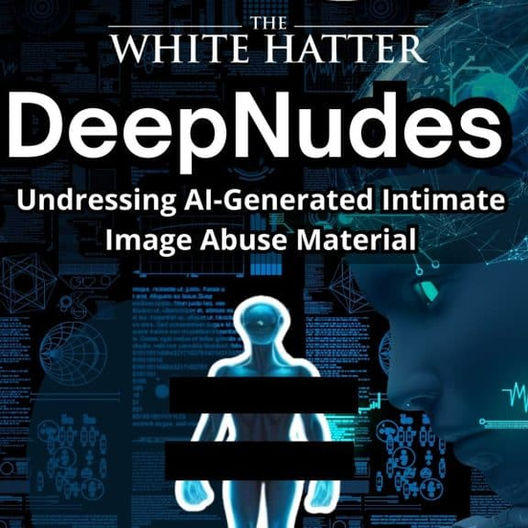What Orcas Can Teach Us About Teens & Technology - It’s Not What Some Want You To Believe
- The White Hatter

- Jun 10
- 5 min read

Recently, a comment made by Matthew Mehan, associate dean at the conservative Christian Hillsdale College, began circulating online. He criticized teens and their use of location-sharing apps, as a form of "mob mentality." In an attempt to explain his concern, he compared teen’s desire to track each other to “a bunch of Orca whales,” saying it stems from not knowing how to orient themselves because they lack relationships with God, family, school, and community. (1)
Since we live on Vancouver Island and are surrounded by pods of Orcas, we felt it was important to rebut Mehan’s comparison, which don’t align with the actual science-based behaviour of these majestic mammals.
On the surface, Megan’s metaphor may sound poetic or even persuasive to some. However, when we pause and look a little closer, at both the science of Orcas and the real reasons teens use digital tools to stay connected, the flaws in this comparison become clear.
Orcas, or killer whales, are not chaotic mobs. They are among some of the most socially intelligent, emotionally bonded, and organized animals in the ocean. They live in matriarchal pods, often consisting of 5 to 30 members who stay together for life. These pods are essentially families, multi-generational units where knowledge is passed down, roles are coordinated, and survival depends on cooperation and communication.
Orcas constantly check in with one another. They use sophisticated vocalizations, echolocation, and synchronized behaviour to maintain awareness of where their pod members are. This isn't because they’re lost or helpless mobs, as Mehan suggests in his comment, it’s because connection is their strength. It's how they hunt effectively, raise young, protect the vulnerable, and navigate their world together.
So if teens are “a bunch of Orca whales” constantly locating each other, maybe it’s a sign that they, like Orcas, are leveraging connection for safety, emotional well-being, and belonging.
To us, this statement is yet another example of an adult academic who is speaking on a topic outside their sphere of expertise, and not truly reflective of what the “majority” of teens are actually doing with their technology. Teens use location-sharing for many practical and social reasons, none of which suggest moral failure or a spiritual void. These digital tools, far from being symbols of dependence or aimlessness, serve meaningful purposes in the day-to-day lives of young people who are navigating an increasingly complex onlife world.
First and foremost, many teens use location-sharing as a safety measure. When they’re out with friends, especially in unfamiliar places, having someone know where they are offers reassurance. It provides a digital safety net, one that parents and caregivers often appreciate just as much as teens do. Rather than calling or texting constantly, a quick glance at a map lets both parties confirm all is well.
Location-sharing also makes coordinating plans more efficient. Instead of sending a string of messages asking “Where are you?” or “When will you get here?”, teens can use the map to track friends in real time. It’s not about being nosy, it’s about convenience and social fluidity in an onlife world that moves fast.
Beyond logistics, these tools are a quiet way for teens to check in on each other. If someone hasn’t been responding and their location hasn’t changed, it might prompt a friend to reach out. It’s a subtle, non-intrusive method of showing care, one that reflects emotional intelligence rather than dysfunction.
Location-sharing is just one way teens stay connected in an onlife world where the physical and digital constantly blend. For today’s youth and teens, relationships don’t start and stop at the front door, they stretch across group chats, voice memos, DMs, and yes, maps. It’s not about control. It’s about connection.
Yes, location sharing does come with certain safety concerns, like the potential for misuse, oversharing, or surveillance-style dynamics in friendships or relationships. But instead of responding with fear or blanket bans, this is where digital literacy education becomes essential in helping teens make informed and respectful choices.
For example, teens should be taught to only share their location with people they trust, such as close friends or family members, not with everyone on their contact list or social media followers. They also need to understand how to use privacy settings, like limiting location visibility to specific people or setting it to expire after a certain time.
Parents and caregivers can also educate their teens about boundary-setting. If a friend becomes upset because they turn off location sharing, that’s an opportunity to discuss digital consent and the right to privacy, even in close relationships. In some cases, this opens up deeper conversations about healthy vs. unhealthy behaviour in friendships or dating scenarios, such as when one person uses location tracking to monitor or control another.
With strong digital literacy education, youth and teens can learn how to balance the benefits of location sharing with the need for personal safety and autonomy. Instead of removing the tool entirely, we can teach them how to use it wisely, which most are in our opinion, just like we teach them how to drive a car safely rather than banning them from the road. It’s not about eliminating risk, it’s about equipping youth and teens with the skills to navigate that risk responsibly.
Understanding this context helps us see that youth and teens aren’t drifting, they’re anchoring themselves to one another in a hyperconnected onlife world, and that deserves recognition, not ridicule.
Critics often frame this behaviour as obsessive or unhealthy, but what they miss is the context. This isn’t teens being lost, most often it’s youth and teens being socially aware in an era where connection happens across screens and spaces.
Mehan suggests that teen’s use of location-sharing is a symptom of lacking connection to deeper values like faith, family, and community. However, the truth is, many teens who use these features have strong family ties, are deeply rooted in their communities, and are simply using technology to extend those relationships into their daily lives.
It’s also worth remembering that every generation had its tech. Baby Boomers had party lines and rotary phones, Gen X had pagers, Millennials had MSN Messenger and group texts. The tools change, but the desire to connect stays the same.
If we’re going to compare youth and teens to Orcas, let’s do it right:
Like Orcas, teens form tight social bonds and rely on one another to navigate life.
Like Orcas, they communicate constantly in nuanced ways adults might not fully understand.
Like Orcas, their strength lies in belonging and interdependence, not isolation.
So instead of seeing location-sharing as a form of "mob mentality" or a sign of weakness or spiritual emptiness, we should recognize it for what it really is, a modern expression of age-old human needs for safety, connection, and community in today’s onlife world.
Digital Food For Thought
The White Hatter
Facts Not Fear, Facts Not Emotions, Enlighten Not Frighten, Know Tech Not No Tech
References:














